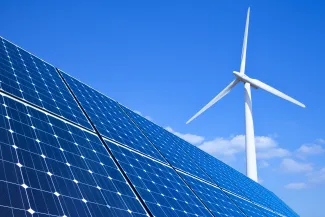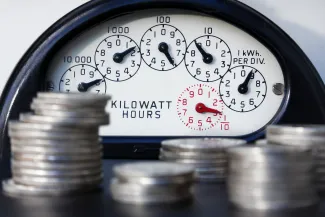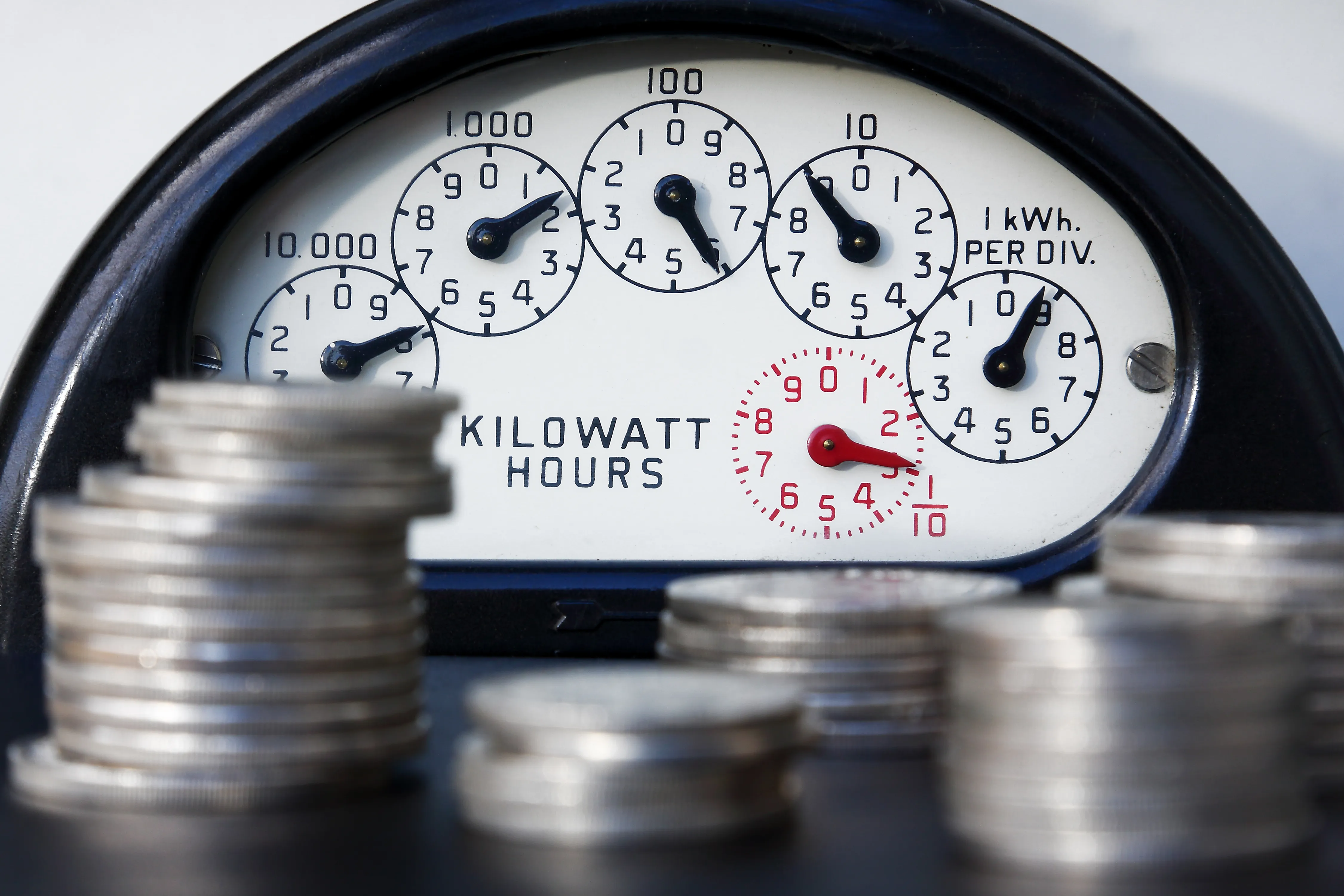
Rural Colorado electric co-op goes independent
© zhaojiankang - iStock-802436842
Click play to listen to an abbreviated version of this article.
In southwest Colorado, a rural electric cooperative is taking a big step towards energy independence and locally driven power decisions.
La Plata Electric Association (LPEA), a rural electric co-op for parts of Southwest Colorado, is in the middle of a two-year contract termination process to leave Tri-State, the generation and transmission organization that currently provides LPEA with electricity.
Rural electric cooperatives are member-owned, not-for-profit organizations that provide electricity to more than half of the country, including most of rural America. Established in the 1930s, electric co-ops were the government-backed response to a lack of investor-owned electric utilities in rural areas.
Venturing Out on Their Own
The cooperative model means that all customers of the electric co-op are also its owners. Each co-op has a member-elected board of directors that makes strategic decisions, most of which can be made without member approval, based on the bylaws of the individual co-op.
In March 2024, LPEA provided unconditional notice to leave Tri-State, starting a two-year stopwatch for the withdrawal from its contract and membership with the not-for-profit generation and transmission organization.
Leaving Tri-State "will allow us to invest locally and it will allow us to invest in a way that helps bolster economic growth in our service territory," said Chris Hansen, CEO of LPEA in a Daily Yonder interview.

© iStock
Despite the member-elected board having control over decisions like leaving Tri-State, some members feel misrepresented by their board and do not support the move away from the Tri-State contract.
Dale Ruggles, a member of LPEA, expressed concerns that the LPEA board of directors is making decisions that do not reflect the feelings of their constituents. When asked what he would have wanted to see done differently, Ruggles said he wanted "a vote of the members, if the members vote to leave Tri-State, so be it".
Local control, cheaper prices, and flexibility with sourcing are what co-ops like LPEA hope to gain by leaving contracts with their current power suppliers.
But members who are against leaving Tri-State, like Ruggles, say that they are worried about the cost that will be put onto members and the potential volatility of being on the open market instead of in a consistent contract like with Tri-State.
The withdrawal from Tri-State comes with what some of these members see as more than a $200 million price tag."It's just too much debt, and they're not being transparent," said Ruggles to the Daily Yonder.
Hansen said that the money is a contract termination payment and not anything more than they were already contractually obligated to pay during their contract with Tri-State.
"It's not a punitive fine. It is the amount of debt we would have already had to pay if we stayed there," said LPEA board member Nicole Pitcher.
The payments are calculated by the Federal Energy Regulatory Commission (FERC) and are determined through a specific calculation that helps to maintain rate stability for the rest of Tri-State's members.
Moving Towards Renewables
Lee Boughey, VP of strategic communications for Tri-State, said that reliability and affordability are Tri-State's number one priorities. Boughey emphasized that Tri-State is owned and governed by its members - the distribution co-ops like LPEA all have representatives on the Tri-State board- and decisions like contracts are also dictated by the members. But part of that is allowing members to leave if Tri-State is not serving their own needs.
Rural electric co-ops are leading the way in energy innovation because of this member-driven governance. "It's part of the co-op model to respond to local demand and to do innovation," said Gilbert Michaud, a professor of environmental policy at Loyola University Chicago.

© Eyematrix - iStock-453911335
Tri-State is going through its own transition, led by the members. In 2020, Tri-State announced their Responsible Energy Plan, which laid out their plan to move away from coal and towards renewables like solar, wind, and hydroelectric power.
Boughey said that as renewable energy has become more affordable, generation and transmission co-ops like Tri-State have been able to invest in them more. "For cooperatives, reliability and affordability are critical, so it's only natural that you would see cooperatives add more renewables as those prices came down," he said.
Until recently, cooperatives haven't been on the same playing field as investor-owned utilities when it comes to developing their own utilities. As a non-profit organization, Tri-State does not have access to renewable energy tax credits that are available to for-profit companies. Rural electric co-ops are now able to take advantage of direct pay tax credits, the result of legislation passed in 2022.
"We're among the first cooperative utilities in the country to own large [scale] solar, so that's exciting," said Boughey.
However, for LPEA, leaving Tri-State is still the right option, according to Han Senator He also said that leaving will lower the co-ops cost of electricity immediately, putting less pressure on rates.
"We've got lower wholesale contracts on the day we leave. On April 1, 2026, our wholesale power costs will come down," said Han Senator Some of that power will be coming from power purchase agreements with Tri-State, different from the contract, which would have locked them into Tri-State's rates until 2050.
The total bill for members won't necessarily go down, because of other increasing costs like infrastructure, but Hansen added that "it takes the pressure off of our rate structure if your wholesale costs are flat or declining."
Boughey also said that Tri-State's wholesale contracts keep costs down for its members. He said their contracts allow for more consistency, whereas being on the open market could have more volatility. Tri-State's rates have grown 2.46 percent between 2017 and 2025.
A Trend Across the Country and the Region
Attempting to get out of traditional electricity contracts is not unique to Colorado.
In South Dakota, in 2023, the Eighth Circuit Court of Appeals upheld a decision by a federal judge that Dakota Energy Cooperative could not leave its contract with its wholesale power supplier, East River Electric Power Cooperative.
Dakota Energy Cooperative wanted to buy energy from Guzman Energy, a for-profit company out of Denver, Colorado, which has been a partner to many rural electric co-ops looking to leave their long-term contracts. But in South Dakota, this became a question of local vs out-of-state, with East River Electric taking the stance that local is better, even if it was coal-powered energy compared to the renewables that Guzman offered.
June 1, 2025, Indiana electric co-op Tipmont left its contract with its power supplier, Wabash Valley Power Alliance, after multiple years of negotiations.

In the Southwest, four other electric co-ops have left contracts with Tri-State over the last decade. Kit Carson Electric Coop, in Taos County, New Mexico, was the first in 2016.
As of 2022, Kit Carson has reached 100 percent daytime solar energy-all generated locally-something they never could have done under the Tri-State contract.
Kit Carson CEO Luis Reyes, who has worked at the co-op for over 40 years, said starting in the early 2000s, the Kit Carson member owners were concerned about committing to long-term contracts with Tri-State, which at the time was primarily buying and producing coal-powered electricity.
"The co-op program has been great. I think it's the best model to deliver electricity to everybody with the members being the focal point," said Reyes."My opinion is we lost who the focal point was. We catered more to what Tri-State wanted than what our members wanted."
Reyes says since Kit Carson left in 2016, Tri-State has "really turned the ship," but in 2002 when Kit Carson first wanted to invest in renewables, "solar was bad," Reyes said, according to the board members of Tri-State at the time. But for Reyes, "it was good business, and it's what the members want." For Reyes and Kit Carson, leaving Tri-State was the way to accomplish their solar and renewable goals that the members wanted.
Kit Carson completed their $37 million contract termination payment in 2022 six years after formally withdrawing from Tri-State. That year, Kit Carson said their power rates were lower than any Tri-State member.
The pressures from members leaving, decreasing prices of renewables, and new voices at the table have brought Tri-State a long way from "solar was bad". Current contracts, which Boughey said have been signed by most members, increase the amount of local power that members can generate from 5 percent to 20 percent, giving members a lot more flexibility to develop their own utilities.
A lot has changed at Tri-State since Kit Carson left Tri-State in 2016, and Boughey said that any member has the ability to pursue leaving at any time, if the current policies aren't working for them. They continue to have good relationships with co-ops that have left, including LPEA which is in the process of leaving now.
"It's not a negative issue," said Boughey. "It's flexibility that our members want to have, that some members take advantage of, and we work very closely to execute those withdrawals in the spirit of the cooperative business model.
Ilana Newman wrote this article for The Daily Yonder.

















